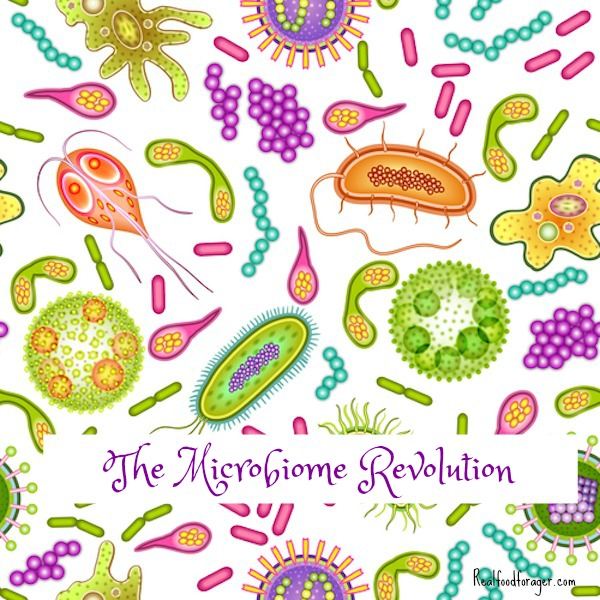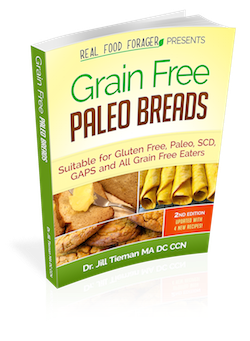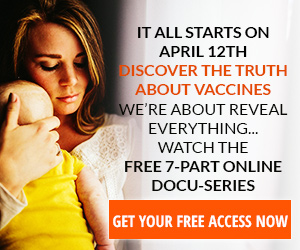It has been said that the number of microbial cells outnumber our human cells by a factor of 10 to 1. However, that ratio has recently been exposed as an incorrectly calculated figure. The real ratio is probably closer to 1.3 to 1 microbes to human cells. That said, we are still hosting more microbial cells than human cells.
Humans are Walking Hosts for Microbes
Alternative practitioners have been saying for many many years that the beneficial microbes in our intestines are critical to overall good health. Now we have the technology to actually identify and quantify the bacteria, archaea, fungi, viruses, protozoa and helminths that we host.
Scientists are opening their laboratory doors to this complex microbial world and the funding is there. In fact, disturbances in the gut microbiome are now associated with not only digestive issues, they go beyond the gut to include diseases in the areas of immunology, rheumatology, diabetes, and neurology.
We can thank the Human Genome Project for breaking the ground to this incredible knowledge trail – which will provide better results in understanding incurable diseases than genetics has done. Hopefully this new knowledge will provide more effective treatments.
Thank Metchnikoff
The first pioneer into the lives of what he called, little animals, was Ilya Ilyich (Élie) Metchnikoff (1845-1916). He was a Russian scientist who was working in Louis Pasteur’s laboratory and if you remember your biology history, Metchnikoff won a Nobel Prize in 1908 for helping to pioneer cellular and humoral immunology.
Later on, he became interested in longevity and how and why people may live longer than others. He investigated groups of poor Eastern Europeans who, in spite of their poverty (or maybe because of it) they experienced longevity.
He studied their diet and lifestyle choices and found that they regularly consumed fermented dairy. He came to believe that regular consumption of lactic acid bacteria in fermented dairy promoted longevity.
This was possibly the first explanation of how taking probiotics (introducing microbes for their health gains) could benefit human health. (source)
New DNA Technology for Identifying Bacteria
You may not realize this, but it’s actually very difficult to grown most species of bacteria on a petri dish, because intestinal bacteria are anaerobic. However, in the late 1950s, it became possible to colonize specific human intestinal microbiota in the guts of germ-free mice.
Then, in the late 20th century, it became possible to conduct DNA analysis of microbes that could not be cultured.
This was the game changer.
Consequently, even governments have started to pour money into research in the microbiome including the International Human Microbiome Consortium, the NIH’s Human Microbiome Project, and the European Union’s MetaHIT project.
Early Microbiome Research
The early research (2006) revealed that humans are essentially superorganisms that are host to diverse groups of microbes which are critical players in human metabolism.
Further studies showed that obese individuals have different groupings of microbes in their guts and transfer of the lean microbes to the obese caused the obese to lose weight.
It became clear that discovery of these previously unknown organisms opened up a world of possibility as to the cause of disease and potential novel treatments.
Are you as fascinated by the microbiome as I am? Are you hoping for a cure through this new research explosion?
Be sure to read the entire article and get to the incredible offer at the end!
Implications for Specific Diseases
Microbiome and Gastroenterology
Understandably, diseases of the gastrointestinal tract have been the first area of study – as it is the command center for the microbiome and the immune system.
It is now understood that inflammation in the gastrointestinal tract is involved in not only in inflammatory disease like inflammatory bowel disease (IBD) – which seems to indicate an (auto) immune reaction to a person’s own gut bacteria – but also GI cancers and other conditions such as IBS and nonalcoholic fatty liver disease.
In fact, a new treatment has emerged from this microbiome science – Fecal Microbial Transplantation (FMT). It is now approved by the FDA for the treatment of antibiotic resistant, recurrent C. difficile infections and has proven to be a life saver for some.
Much more exciting research into FMT is coming in relation to other serious GI diseases like ulcerative colitis and Crohn’s disease.
Microbiome and Rheumatology
Although the command center is in the intestines, it has been clearly shown that the human adaptive immune response (humoral) is regulated by the gut microbiome. What this means is that when there are imbalances in the gut microbiome (dysbiosis), there can symptoms and diseases in areas and organs other than the intestines.
This is exemplified in a condition like rheumatoid arthritis (RA) where the disease is in the joints, but the root cause is in the intestines.
This study observed substantial differences in the microbiomes of people with recent-onset RA and fibromyalgia. The researchers concluded that,
These findings support the hypothesis that intestinal microbes participate in the etiopathogenesis of RA.
This study found as association between gut bacteria in people with spondyloarthritis and inflammatory bowel disease. The researchers cite,
Multiple studies in ankylosing spondylitis, psoriatic arthritis, juvenile SpA, and animal models of SpA are revealing common bacterial associations among these diseases as well as IBD.
It is clear that dysbiosis in the microbiome has become the focus of a tremendous amount of research.
Microbiome and Diabetes
What does diabetes have to do with gut bacteria?
There are numerous studies looking into the potential association of specific groups of bacteria with blood sugar dysregulation.
Interestingly, as these studies are conducted around the world, preliminary results show that different groups of bacteria are associated with type 2 diabetes in different parts of the world.
So much for an easy global fix.
Bacteria are too smart for that.
Microbiome, Neurology and Mental Health
Studies have shown that the microbiome communicates with the brain through various channels, such as hormones, via the immune system and through neurotransmitters in the gut.
There are clear associations between autism spectrum disorders (and other mental disorders) and gut dysbiosis. This was first documented by Dr. Andrew Wakefield in the early 2000’s in relation to the MMR vaccine. He found a new type of enterocolitis in the bowels of autistic children along with strains of the MMR vaccine.
This caused a storm of dissent, but the reality of gut associated inflammation causing neurological disturbances has held strong.
Illnesses such as schizophrenia, major depressive disorder, and bipolar disorder have as a basic condition – inflammation in the gut and dysbiosis.
In the book Gut and Psychology Syndrome, Dr. Natasha Campbell-McBride makes a case for her GAPS diet as a basic treatment for these neurological/mental diseases.
I have personally counseled patients on this diet and seen them improve – some 100%. Current studies are testing probiotics for these conditions, but the treatment needs to go beyond just probiotics – it needs to reevaluate the diet of the individual as well.
Further Support for Microbiome Research
In May, 2016, the White House Office of Science and Technology Policy (OSTP), in collaboration with Federal agencies and private-sector stakeholders announced a new National Microbiome Initiative (NMI) to foster the integrated study of microbiomes across different ecosystems.
There will be a combined Federal agency investment of more than $121 million in Fiscal Year (FY) 2016 and 2017 funding for cross-ecosystem microbiome studies. Yes!
The key to good health is a healthy microbiome. You may be shocked (or surprised) to find out that there are 10 times that amount of bacterial DNA in each and every one of us.
That makes us more microbe than human. Perhaps we are just walking containers for the bacteria – many of whom are essential to human life.
Get the Most Current Information about the Microbiome
Are you as fascinated by the microbiome as I am? Are you hoping for a cure through this new research explosion?
Check out my newest ebook, Heal Your Microbiome Optimize Your Health – on sale today!
Like this article? Get many more and tons of information and instructions on using grain free flours in my fantastic kindle books. You don’t need a kindle to read them, as Amazon offers a FREE reader for all devices, on the sales page for each book.
Grab my kindle books here!
Grain Free Paleo Breads
Grain Free Paleo Snacks
Grain Free Paleo Desserts and Treats
These recipes are suitable for Paleo, SCD, GAPS and all grain free eaters.











